#WritingResources
Explore tagged Tumblr posts
Text
“How to Fix a Flat Main Character” | New Post!
🎯 new post is up on @thewriteedvice: “How to Fix a Flat Main Character” aka the carousel that made me realize my MC is just a sad little narrative sponge 😐
this one’s for writers who: — keep saying “they’re just quiet” — accidentally wrote a background character in the lead role — realize their protagonist is just reacting to plot like they’re in a wind tunnel
💡 save the post for later. 🧃 scream in the comments. ✍️ then go make your MC want something already.
📍 find it now on IG (@thewriteedvice)
instagram
#writingtips#amwriting#characterwriting#writinghelp#flatcharacters#writingresources#thewriteedvice#writerblog#indiewriters#writersonline#tumblrwritingcommunity#writeblr#writinghack#writingcommunity#storystructure#creativewritingtips#writing help#writeblr community#writing resources#creative writing#writingmotivation#writers block#writingadvice#writers on tumblr#how to write#thewriteadviceforwriters#novel writing#writers and poets#writing#fiction writing
61 notes
·
View notes
Text
P1 -Types of Scarcity in Post-Apocalyptic Fiction: A Comprehensive Guide to Survival Elements in Dystopian Worlds
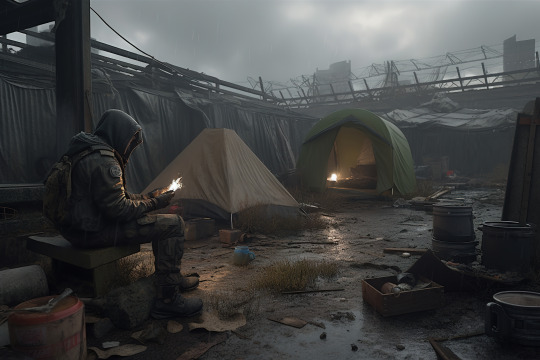
Understanding the Types of Scarcity
Material Resources:��First, start with food, water, fuel, and ammo. Once you have the basics, move to less commonly thought-about things like batteries, clothing, scrap metal, and wood.
Skills and Knowledge: Doctors, engineers, survival experts, and mechanics would be some people worth knowing or being in a post-apocalyptic world. What if there were none?
Emotional Resources: Once the world goes to hell, trust and community become resources. Surviving sometimes means getting along with others; you'll want all parties to mean it. Getting fed to a zombie so someone can escape sounds like no fun.
Information: Who are you going to let hold the map for you? Things can get harder on your team if it gets stolen, left behind, or destroyed. In a world without GPS, information is a resource; let's face it, you must trust its handler.
This is part one of a five-part writing guide to post-apocalyptic scarcity. Tune in next time for a more in-depth breakdown of scarcity and who makes the decisions? Not me, that's for sure. I'd probably be the one used as zombie bait first.
-Indigo Everly
Want more advice? Check out my other articles!
#WritingCommunity#AmWriting#WritersLife#WritingTips#WritingInspiration#CreativeWriting#WritingPrompts#Writeblr#WritingResources#FictionWriting#PoetryCommunity#NonfictionWriting#Screenwriting#WritersOnTumblr#NaNoWriMo#WritingProcess#CharacterDevelopment#Plotting#EditingTips#Storytelling#PostApocWrite#WastelandWriters#EndTimesFiction#SurvivalWriting#ApocalypticThemes#DystopianElements#SHTFWriting (SHTF: Sh*t Hits The Fan)#FalloutFiction#AfterTheEnd#DystopianDrama
231 notes
·
View notes
Text
Hello World
summer's here, people are on break, and somewhere—books are being written. stories are bubbling. ideas are dancing. keyboards are (hopefully) clacking. and if yours isn't yet? that’s okay.
if you’re feeling a little stuck— no inspo? world feels flat? can’t quite stitch it all together?
i got you.
i'm working on a set of world-building kits meant to spark something. backgrounds, aesthetics, ideas, structure— something to help light that fire again. in your head. and on your page.
✨ here’s to messy drafts and beautiful worlds. ✨ stoke the fire. write the thing.
#writerblr#worldbuilding#writeblr#writingresources#indieauthors#creativehelp#summerwriting#plotarcade#writing advice#writers on tumblr#kits#worldbuilding kit
2 notes
·
View notes
Text

PromptZilla Review: The World’s Biggest Prompt Pack Is Here
Introduction: PromptZilla Review
100,000 Prompts to Supercharge Your AI
Let’s cut to the chase. If you use AI without PromptZilla, you use only 5% of its potential. That ends today. PromptZilla is here. It’s the biggest, most organized, high‑impact prompt pack ever. Plus, you can earn big commissions promoting it.
Overview: PromptZilla Review
Vendor: Nelson Long
Product: PromptZilla
Launch Date: 2025-Jun-23
Front-End Price: $17.00
Niche: Affiliate Marketing, Artificial Intelligence, Plr, Prompt Pack
Recommendation: Highly recommended
Support: Check
Contact Info: Check
Why Most Prompt Packs Fail You
Most prompt packs are chaos. They are messy, bloated, and useless. You lose time digging through folders. You lose mood. You lose results.
What Makes PromptZilla Different?
PromptZilla changes the game. It is smart. It is clean. It is powerful. It has 100,000 ultra‑optimized prompts. Each one is ready for action. No fluff. No guesswork.
Why “Prompt” Quality Matters
AI is strong. But only if you speak its language. Bad prompts = bad results. Strong prompts = AI magic. PromptZilla gives you expert prompts. So you win instantly.
#PromptZilla#PromptPack#ContentCreation#CreativeWriting#WritingPrompts#Inspiration#WritingCommunity#ContentIdeas#WritersOfPinterest#PromptInspiration#WritingTools#CreativePrompts#Storytelling#WritingResources#BloggingTips#PinterestForWriters#DigitalProducts#WritingHelp#IdeaGeneration#ContentStrategy#WritersLife#PromptChallenge#WritingJourney
0 notes
Text
StoryShack Review: E-Learning Story Books with Unrestricted PLR!
Welcome to my blog post ‘StoryShack Review‘.In an era where digital landscapes are constantly evolving, the demand for engaging e-learning content and digital marketing resources has skyrocketed.
This surge has particularly highlighted two booming sectors: e-learning, poised to reach $58.45 billion by 2024, and the Make Money Online (MMO) niche, valued at an astounding $800 billion. Amidst this lucrative backdrop stands a beacon for educators, marketers, and aspiring entrepreneurs alike: The Story Shack e-Learning Collection.
Read the full review here:
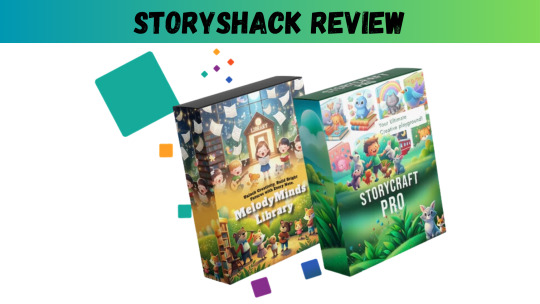
#StoryShackReview#WritingTools#ShortStory#WritingCommunity#Authors#CreativeWriting#Storytelling#WritingSoftware#Fiction#WritingTips#Storytellers#WritingApp#Narrative#DigitalWriting#WritingResources
0 notes
Text
Talk About Your Writing
In your writing, how do you capture the essence of a fresh start that comes with the New Year?
#YourWriting#Writing#FemaleWriters#Writers#WritersOnTumblr#MyWriting#WritingTips#WritingInspiration#WritersBlock#WritingCraft#WritingProcess#WritingAdvice#AuthorLife#WriteChat#WriterStruggles#WritingResources#WriterGoals#WriteEveryDay#WritersCommunity#WritersCorner#WritingLife#WritingStyle#WritingRoutine#AuthorAdvice#WriteOn#CreativeWriting#WritingJourney#WriterThoughts#WritersOfTumblr#TumblrWriters
0 notes
Text
10 Quick Grammar Tips for the Nonwriter
There is so much to know about grammar. There are parts of speech, sentence structure, tenses, plurals and singulars, punctuation, modifiers, and so much more. It can be really overwhelming for someone who doesn’t consider themselves a “writer” but still needs to write well. This article will go over some quick and basic grammar tips that anyone can hopefully understand.
#bykimber#writer#writing#writingtips#creativewriting#novelwriting#writingcoach#writerslife#writingcommunity#storytelling#writingresources#writingadvice
0 notes
Video
youtube
Another great episode of of Jolene’s Book and Writer’s Talk Podcast. We talked about researching through history and family records. Lots of great information.
0 notes
Text
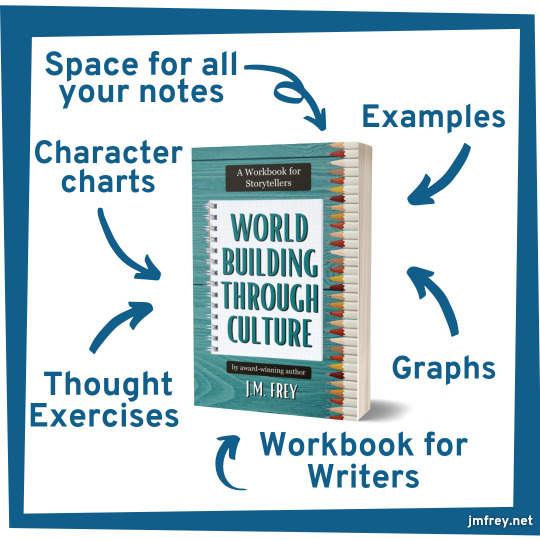
WORLDBUILDING THROUGH CULTURE
Writing a Secondary World book or series, and need some help constructing your setting?
Worldbuilding is more than just maps!
Creating a believable secondary world, with consistent internal logic, language, taboos, and politics can be tricky.
Luckily, this workbook is here to help you devise the best possible setting for your #SFF story.
Based on a lecture series I used to do one be before the pandemic, this is a workbook that's really meant and designed to WORK.
Write in it, paste in pictures, doodle, add extra notes or change your mind and erase things!
#WritingCommunity#AmWriting#AmWritingSFF#AmWritingFantasy#AmWritingSciFi#AmWritingFiction#WordsForWriters#WorldbuildingTips#WorldbuildingThroughCulture#worldbuilding#writingresource#writingbook#bookonwriting#writingguide#creativewriting#booksaboutwriting#portalfantasy#secondaryworlds#scifi#sciencefiction#speculativefiction#specfic#fantasy#writing#WritingHowTo#WritingBlog#WritingTips#secondary world#portal fantasy#j.m. frey
6 notes
·
View notes
Text
#writingresources
Writing Tips Master Post
Edit: Some posts may be deleted
Character writing/development:
Character Arcs
Making Character Profiles
Character Development
Comic Relief Arc
Internal Conflict
Character Voices
Creating Distinct Characters
Creating Likeable Characters
Writing Strong Female Characters
Writing POC Characters
Building Tension
Writing Grumpy x Sunshine Tropes
Plot devices/development:
Intrigue in Storytelling
Enemies to Lovers
Alternatives to Killing Characters
Worldbuilding
Misdirection
Consider Before Killing Characters
Foreshadowing
Narrative:
Emphasising the Stakes
Avoid Info-Dumping
Writing Without Dialogue
1st vs. 2nd vs. 3rd Perspective
Fight Scenes (+ More)
Transitions
Pacing
Writing Prologues
Dialogue Tips
Writing War
Writing Cheating
Worldbuilding:
Worldbuilding: Questions to Consider
Creating Laws/Rules in Fantasy Worlds
Book writing:
Connected vs. Stand-Alone Series
A & B Stories
Writer resources:
Writing YouTube Channels, Podcasts, & Blogs
Online Writing Resources
Outlining/Writing/Editing Software
Writer help:
Losing Passion/Burnout
Overcoming Writer's Block
Fantasy terms:
How To Name Fantasy Races (Step-by-Step)
Naming Elemental Races
Naming Fire-Related Races
How To Name Fantasy Places
Ask games:
Character Ask Game #1
Character Ask Game #2
Character Ask Game #3
Miscellaneous:
1000 Follower Post
2000 Follower Poll
Writing Fantasy
29K notes
·
View notes
Text
(Daily Writerly Questions #2) What type of writing do you primarily focus on?
Hey fellow writers! I'm super excited to share that I've just launched a Tumblr community. I'm inviting all of you to join my community. All you have to do is fill out this Google form, and I'll personally send you an invitation to join the Write Right Society on Tumblr! Can't wait to see your posts!
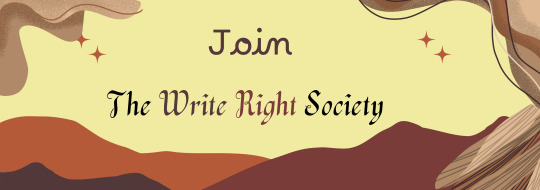
#writing#thewriteadviceforwriters#writeblr#creative writing#on writing#writing tips#writers block#how to write#writers and poets#authors on tumblr#author#fiction#women writers#book writing#writer#writing blog#writers on tumblr#writer stuff#writerscommunity#tumblr community#writingresources#writing resources#writing requests#writing reference#writing research#writing related#writersblock#creative writers#helping writers#writerslife
23 notes
·
View notes
Text
The Best Fantasy Language Generator for Your Fiction
This is a fantasy language resource I wanted to post about. I'm sorry, it's not a complete article. A new guide is coming… someday. For now, here is my favorite fantasy language generator https://www.vulgarlang.com . They have an in-depth language generator that guarantees a new language with a dictionary and sentence translator. Wow, this is starting to sound like an ad. It's not. I have clearly heard too many sponsorship plugs on YouTube lately. It's melting my brain.
#fantasywriting#worldbuilding#languagecreation#fictionwriting#writingtools#writingresources#creativewriting#fantasyworlds#writingadvice#writercommunity#amwritingfantasy#writingtips#fantasyfiction#writinginspiration#indieauthors#storycrafting#writinghelp#writinglife#fantasyliterature#novelwriting#creatinglanguages#linguistics
3 notes
·
View notes
Video
youtube
Assignment Writing Excellence and Beyond Discover Our Services
https://youtu.be/wxQKesgpiV8
Assignment Writing Excellence and Beyond Discover Our Services
Welcome to our YouTube channel, where excellence in "Assignment Writing" is the name of the game! 📝✨ If you're a student, a professional, or anyone in need of top-notch assignment-writing skills, you've come to the right place. In this video, we're about to embark on an educational journey that will equip you with the tools, tips, and tricks to master the art of assignment writing. So, sit back, relax, and prepare to enhance your writing game. In the realm of academics and beyond, effective assignment writing is a skill that can open doors to success. Whether you're striving for that perfect grade, aiming to impress your professors, or looking to improve your professional communication, this video is your gateway to achieving your goals. Our expert instructors will guide you through the entire process, from understanding the assignment prompt to conducting research, structuring your paper, and polishing it to perfection. We'll delve into the nuances of crafting engaging introductions, compelling body paragraphs, and powerful conclusions that leave a lasting impact on your readers. But that's not all! We'll also share invaluable time-management techniques and strategies for combating writer's block. Plus, we'll provide you with resources and tools that will make your assignment-writing journey smoother and more efficient. If you find this video helpful, don't forget to hit the like button to show your appreciation. And if you're hungry for more insightful content and writing tips, be sure to subscribe to our channel and ring that notification bell. Sharing is caring, so if you know someone who could benefit from this video, please share it with them. Together, we'll master the art of assignment writing and excel in all our writing endeavors. Let's get started on this exciting journey to academic and professional success! 🚀📚🌟 With a commitment to excellence and a passion for creativity, our team of professionals is ready to collaborate with you to achieve your goals. So, welcome to a world where innovation, precision, and imagination converge. Welcome to our services hub, where your vision becomes reality. For Your Enquiries Reach Us At: SOLUTION LAB Email ID’s:- [email protected] [email protected] Web: - www.solutionlab.online https://solutionlabonline.blogspot.com/ #subscribenow #subscribenowmychannal #subscribenowmorevideos #subscribenowmoreinterestingvideos #assignmentwriting #writingskills #subscribenow #assignmentwriting #writingskills #academicwriting #essaywriting #researchpaper #homeworkhelp #studentlife #collegelife #studytips #writingcommunity #essayhelp #AssignmentTips #studyhard #writerslife #writingadvice #studentresources #academicsuccess #paperwriting #effectivewriting #AssignmentDeadline #thesiswriting #essaytips #assignmenthelp #studymotivation #researchskills #WritingSolutions #literaturereview #studentsupport #CitationStyle #timemanagement #homeworktips #ScholarshipEssay #grammarmatters #creativewriting #writingworkshop #WritingResources #PlagiarismFree #academicexcellence #AssignmentEditing #studentstruggles #proofreading #AssignmentGrades #AcademicChallenge #EssayEditing #studyhacks #studenttips #AssignmentSupport #criticalthinking #writinggoals #AssignmentMaster #usa #usacollege #unitedstates #unitedstatesofamerica #unitedstatesofamerican #unitedstatesofamericaplease #usanews #usanewsonline #usacollege #usatoday #usatodaynews #usatodaysports #unitedarabemirates #uaekhabartoday #uaenews #uaenewsofficial #uaelife #uaelifestyle #uaejobs #uae #dubai #dubailife #dubaijobs #dubainews #dubainewstoday #dubailifestyle #dubailifestylevlog #dubailifestyleblogger #canada #canadalife #canadalifestyle #canadian #canadianuniversity #canadanews #canadanewstoday #australian #saudiarabia #saudiarabialatestnews #saudiarabianews #saudiarabianewslive #saudiarabiajobs #saudinews #saudi #saudi_news #saudi_news_update #saudinewsofficial #oman #omannews #omannewsdaily #omanchannel #omannewslive #omanjobs #omanjob #omanjobnewstoday #qatar #qatarlife #qatarlifestyle #qatarnews #qatarjobs #qatarevents #qatarliving #kuwait #kuwaitnews #kuwait_kuwait #kuwaitlivenews #kuwaitcity #kuwaitlatestupdate #kuwaitlatestupdates #kuwaitlivenews #kuwaitnewshighlights #kuwaitnewsheadlines #newzealand #newzealandbusiness #newzealandlife # #uk #unitedkingdom #unitedkingdomlife #britain #britainnews #greatbritain #british #britishenglish #britishenglishpronunciation #britishenglishclass #british #bahrain #bahrainbloggers #bahrainevents #bahrainnews #bahraintv #poland #portugal #português #finland #singapore #singaporevlog #singaporevideos #mexico #mexicocity #brazil #argentina #chile #southafrica #southkorea #norway #peru #germany #germanynews #germanywale #german #france #francese #italy #italya #italian #italia #italianteacher #italiancourse #italianclass #turkey #spaintravel #spainish
0 notes
Note
i'm just going to put this here
- tips for anyone who wants to write a long series but cant seem to -
go back to what inspired you to write it, if it's an imagination that you daydreamed, write everything that comes to mind.
create art. idc how you make it, moodboards, self drawn, gifs, image sets, collages. MAKE THEM. then you can go back and look at it for inspo
write plot in bullet points before writing them out. SAVES SO MUCH TIME. bc you dont forget it and you can always come back to edit it when you have new ideas.
be detailed with your characters, there should be some detailed templates on tumblr if you dont know where to start (search 'character templates')
that's basically it for me
signing off
lyns :))))
THIS IS SO HELPFUL!! EVERYONE THANK LYNS RN!
#writingresources#writing resources#writing tips#writing tricks#prompts#helpful resources#lovely lyns
26 notes
·
View notes
Text
Useful Apps [and Websites] for Writers
@writinghaven on instagram || NO REPOSTS!
NaNoWriMo: A useful app with multiple writing challenges that lets you create a project and implement goals! You can track your word count or your editing progress and can set up how many words you need a day to reach your goal in a specific timeframe :) 10/10! I personally use this one everyday
Google Docs: I'm sure most of you know of this one, but out of all the platforms I've written on, I love Docs the best for a few reasons. One, it has a lovely autosave feature and as a night time writer, I can get groggy and forget to save at times. Another is that it's very easy to use, the fonts are awesome, and it runs well even on a high word count!
Notion: Notion is honestly useful for everything. I use it for my everyday to-do’s, as a calendar, and I even have a notion page for random quotes I like! I actually recently started using it for organizing my WIP and while it’s not designed to do that, it’s super easy to turn your notion into anything you want since it’s so adaptable. Also, it can be super aesthetic :)
Writer's Companion: A free program with no ads that is custom-made to help you build your world, create characters, write outlines, set goals, and more! It basically helps you keep all the different elements of your WIP organized
ProWritingAid: Alright, so I'm sure most of you know Grammarly. ProWritingAid is basically that, but you can use it for creative writing (and in my opinion their platform is better and their prices are more reasonable :)) Unlike Grammarly, ProWritingAid very at targeting dialogue and it's super useful for grammar and style too!
Pinterest: Super useful for finding face claims and inspiration for your novel :) While it isn't directly writing related, I don't think I'd be able to write as well without it! You can also find some nice writing tips on there too
Scrivener: This platform is purposefully designed for authors so it's super useful and requires less formatting compared to if you're making your manuscript on Google Docs or Microsoft Word! It has a cool management system for documents and notes and a cool thing is that you can write your WIP in any order and easily rearrange it :)
Zepeto and Picrew: There’s a huge portion of writers that can’t draw and find it hard to find the right faceclaims for their OCs, so Zepeto and Picrew are my personal favorite apps/websites for character visualization :D
HONORABLE MENTIONS!!
Notebook.ai
Toyhou.se
Story Planner
Pure Writer
Character Planner
Novelist
Also, just some websites with micro writing communities:
CAMP NANOWRIMO. campnanowrimo.org
CRITIQUE CIRCLE. critiquecircle.com
CRITTERS WORKSHOP. critters.org
FICTIONAUT. fictionaut.com
INTERNET WRITING WORKSHOP. internetwritingworkshop.org
STORYADAY. storyaday.org
WATTPAD. wattpad.com
THE WRITERS CHAT ROOM. writerschatroom.com
Hi guys! I'm back from my sudden hiatus :) Posts like these take a long time to make so any support is greatly appreciated! Remember to leave a like if you found this helpful and comment what you thought or any post requests you have! [shares and saves are huge gifts you guys can give to support me so if you do decide to do so, thank you so much!]
133 notes
·
View notes
Text
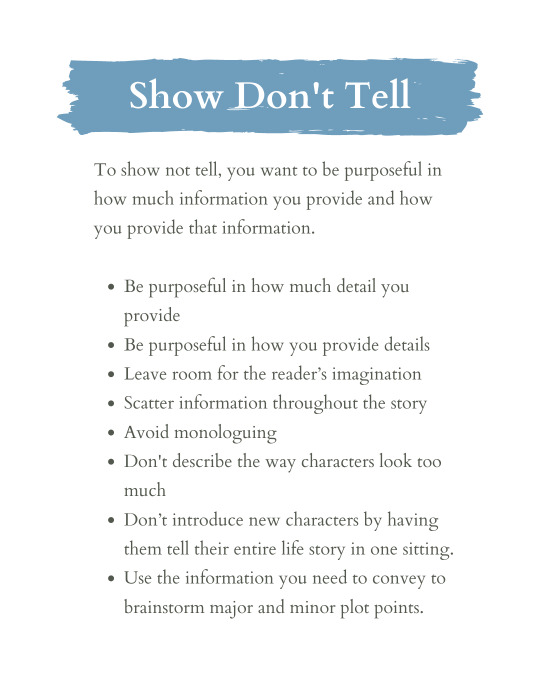
Story elements are things any story has to have, like plot, characters, a beginning, a conflict, a climax, and an ending. Literary devices are tools that stories use, like allusion, flashbacks, or foreshadowing. Not all stories have to have a flashback, but your story might need it to convey something to the reader in the best way.
Story elements can also be considered literary devices when we use them as tools in our storytelling. For example, all stories have settings, but great stories use setting in creative ways to further enhance their storytelling.
Keep Reading Here
#bykimber#writer#writing#writingtips#creativewriting#novelwriting#writingcoach#writerslife#writingcommunity#storytelling#writingresources#writingadvice
0 notes